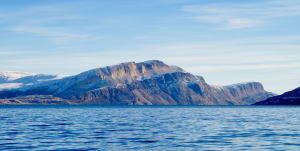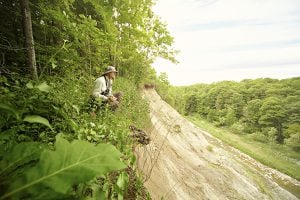It’s likely that the majority of Canadians will never set eyes upon Anguniaqvia niqiqyuam (pronounced: Ung-u-niak-via Ni-kig-e-um), which the federal government designated as Canada’s newest marine protected area in November 2016. After all, getting to the southern reaches of the Beaufort Sea near the isolated fly-in hamlet of Paulatuk, N.W.T., is not exactly a straightforward affair.
With that in mind, here are some key facts and figures that will help you familiarize yourself with Anguniaqvia niqiqyuam Marine Protected Area (ANMPA) — and just maybe inspire you to one day see it with your own eyes.
2,361
ANMPA’s area in square kilometres.
0.04
The percentage of Canada’s oceans that ANMPA represents.
5
The percentage of Canada’s oceans the government has committed to protect by 2017.
10
The percentage of Canada’s oceans the government has committed to protect by 2020.
Second
ANMPA is Canada’s second official marine protected area in the Arctic. Tarium Niryutait became the first in 2010.
First
ANMPA is Canada’s first marine protected area with conservation objectives based specifically on Indigenous traditional knowledge.
Nelson Green
The protected area was named in honour of this respected Inuvialuit elder from Paulatuk, whose traditional hunting grounds were known by the same name. Green froze to death in 1999 after his winter gear was destroyed in a cabin fire.
327
The population of Paulatuk in 2016.
296
The number of people in Paulatuk identified by the government of the Northwest Territories as “Aboriginal” in 2016.
71.7
The percentage of people who engaged in the traditional activities of hunting and fishing (2013).
1986
The year commercial fishing in the area closed, due to a decline of commercial Arctic char catches.
2008
The year Fisheries and Oceans Canada received funding to establish a new marine protected area in the region.
2010
The year Fisheries and Oceans Canada officially identified Anguniaqvia niqiqyuam as a potential site for marine protected area designation.
Critical habitat
The protected area is home to Arctic char, cod, beluga whales, ringed and bearded seals, polar bears and a variety of seabirds.
40,000
The approximate number of beluga whales that use the area as summer habitat
Thick-billed murres
The area is home to the only colony of these birds in the western Canadian Arctic.
Wise Bay and Summer’s Harbour
The location of the two potential deep-water harbours at the northern end of the Parry Peninsula. Both are adjacent to the protected area, the boundaries of which were drawn so as not to interfere with either site.
$166,283
The approximate annualized average cost to the federal government for administration and management of the protected area.





